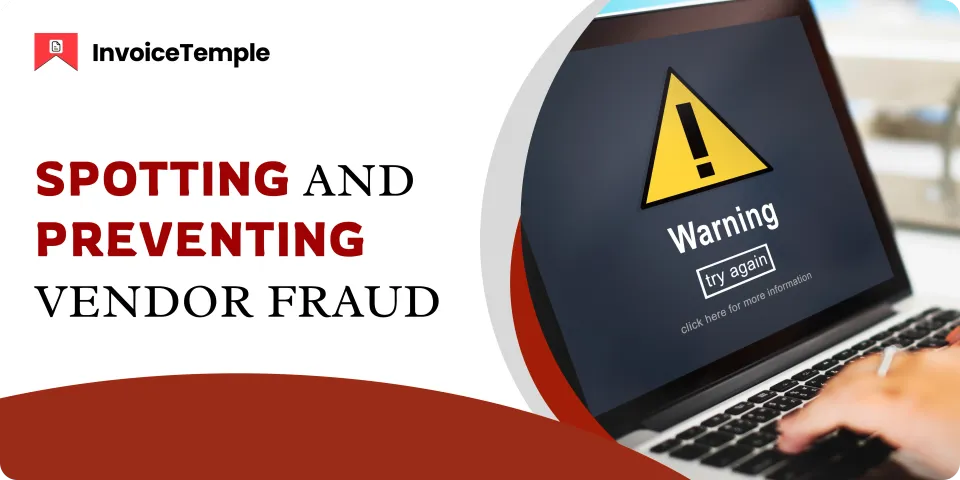Understanding Vendor Fraud: Common Types and Prevention Tips

The most common phrase that is often heard in this digital era is “fraudulent activities”. While not all fields are affected, fraudulent activities are increasing in most sectors. Business is not an exception to it. Fraudulent activities are taking place both on the vendor’s side and on the client’s side. This blog will explain vendor fraud, a common issue nowadays, its types, and some prevention strategies. Continue to read this blog to gain valuable details about it.
An Overview of Vendor Fraud:
Vendor fraud is a type of fraudulent activity committed by vendors, contractors, or suppliers who steal money or resources from their clients or small businesses. This fraudulent activity takes place when the accounts payable team manipulates the payment process, makes errors, or has weak internal controls. In some vendor fraud activities, the major role will be played by an employee of the business itself. These vendor fraud activities cannot be identified easily at an earlier stage. But once the business faces heavy loss or over expenses, then they start analyzing the invoices, bills, pending and completed payments, etc.
If a business faces a loss due to vendor fraud, then the recovery process goes at a snail’s pace. First, let’s identify the common types of vendor fraud.
Different Types of Vendor Fraud:
1. Fake Vendors: These are the types of fraudulent activities where the invoices are forwarded to a company by entering the details of a vendor who is non-existent in the field. The details of a fake vendor will be given to receive the payments.
2. Duplicate Invoicing: This is a type of fraudulent activity where the invoices for the same purchase are forwarded from the vendor’s side to get the payment one more time.
3. Invoice for Undelivered Goods: This fraudulent activity occurs when the vendor issues an invoice for the products or services that are not offered or that have been rejected by the client.
How Can Vendor Fraud Be Identified?
Vendor fraud can be identified easily by some effective strategies, and they are as follows.
- When a business or a client receives an invoice, the vendor details included in it must be checked for clarity. Every invoice must include the vendor details, and if they are not present, then chances are there for vendor fraud.
- The invoicing timing must be analyzed properly. If it is unusual from the regular timing, then vendor fraud may occur.
- While performing a three-way or four-way matching process, the details in all the documents must be matched. If it doesn’t match, then there are chances for vendor fraud.
- Always check for any unexpected cost increases in the invoices and make a background verification check.
Effective Vendor Fraud Prevention Strategies
Prevention is better than a cure. Preventing vendor fraud is more effective than dealing with the consequences later. For effective vendor fraud prevention, some tips can be followed, and they are mentioned below.
1. Get adapted to a proper vendor management system so that the chances of experiencing vendor fraud will be reduced.
2. Implement strong and safe payment procedures and multilevel approvals to prevent fraudulent activities.
3. Regularly check the performance and do background verification for the employees.
4. Hire separate employees for separate processes like invoicing, accounting, inventory handling, accounts payable, accounts receivable, etc.
5. Perform a three-way or four-way matching process. In the three-way matching process, the purchase order, invoice, and goods received note are compared. In the four-way matching process, the purchase order, invoice, goods received note, and the goods receipt accepted are compared.
Staying alert and careful of such fraudulent activities is crucial for running a successful business. So, identify the vendor fraud and prevent it before the business goes down a loss path.
